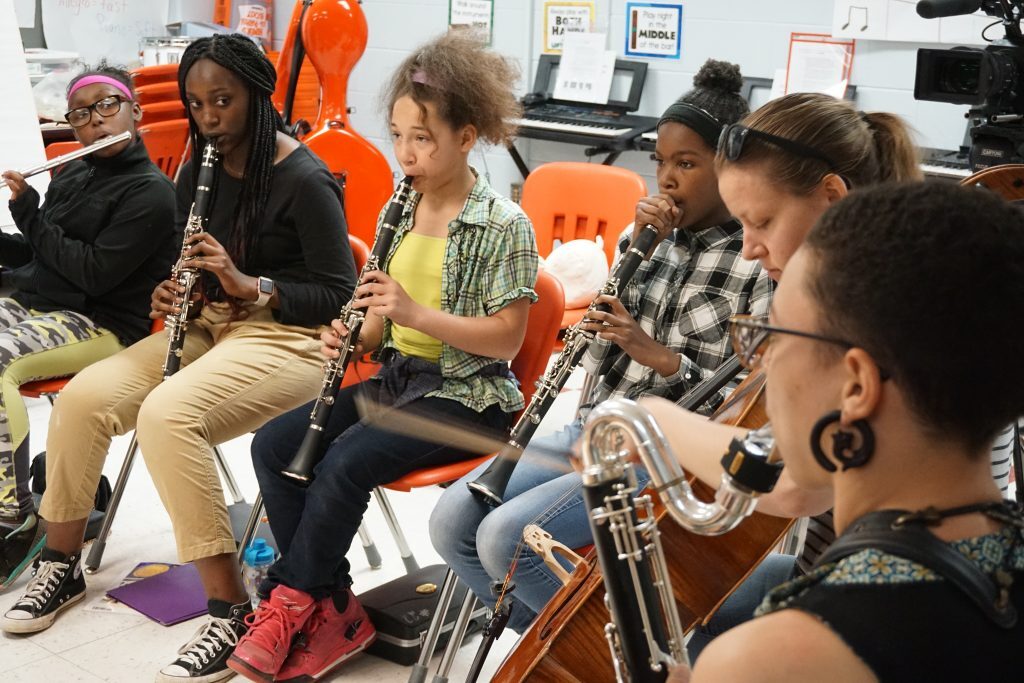
Students from Daily Elementary Worked With SMTD Students To Learn Improvisation Photo by Chris Boyes
The University of Michigan has long included public engagement in its educational mission, aiming to reinvest its resources in the communities it serves. Such engagement also contributes to the University’s Diversity, Equity and Inclusion (DEI) strategic plan by increasing awareness and access among underserved populations in the state of Michigan. At the same time, U-M students’ participation in community outreach is essential to the University’s goal of “developing leaders and citizens.” SMTD’s sponsorship of frequent public performances already make it one of U-M’s most outward-facing units, but many students seek to make more of an impact.
“So many of our students seek to be ‘artist/citizens’ whose work makes a difference,” says SMTD Dean David Gier. “They can learn and grow through their interactions outside the curriculum in ways that are not possible through other means.”
Enter SMTD’s PEERs (Performance Engagement Educational Residencies) program. Now in its fourth academic year, the program provides mini-grants as well as logistical and programmatic support that allow SMTD students to partner with underserved communities throughout Michigan to create mutually beneficial arts experiences.
“When the students forge that human connection and realize they can make an impact, it’s really special,” said Rikki Morrow-Spitzer, SMTD’s DEI coordinator. “We really believe that our students are getting just as much as the community members” from their PEERs experiences.
Many students approach Morrow-Spitzer with fully formed projects in mind, and simply need help making them a reality. “Sometimes a student walks in with ideas about how to use the funding that we had never even thought about!” said Morrow-Spitzer.
However, for those who have only a vague sense of what their project could be, Morrow-Spitzer works with colleagues at U-M’s Center for Educational Outreach and the Edward Ginsberg Center for Community Service and Learning to locate potential community partners.
“We care a lot about who we partner our students with and it being the right fit for both sides,” Morrow-Spitzer said.
As the PEERs program continues to develop, Gier would like to see it grow deeper roots within SMTD, connecting to other programs that do similar work such as the Department of Music Education and the Office of Engagement & Outreach. He also envisions more partnerships with faculty who are interested in providing their students with opportunities to take classroom lessons out into the real world.
“To truly be among the Leaders and Best,” he says, “you have to get out of the classroom.”


